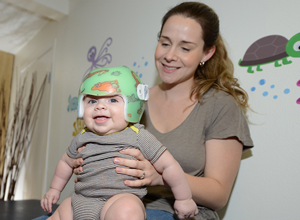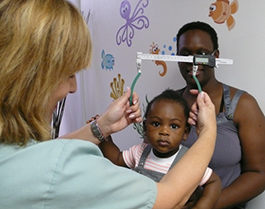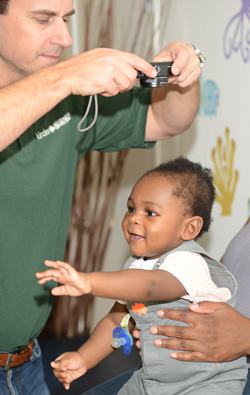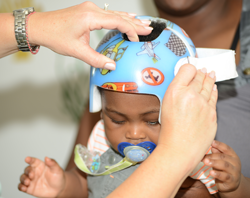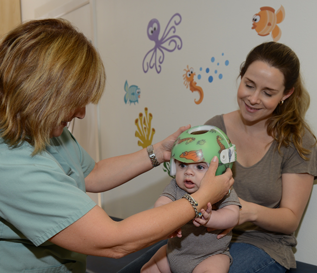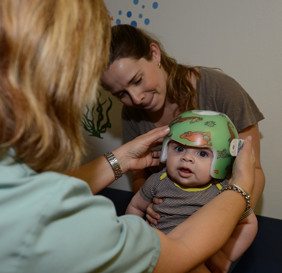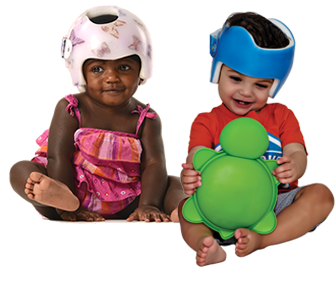Usage Time for the First Week
| Helmet is: |
On |
Off |
On for Nap |
On for the Night |
| Day 1 |
1 hour |
1 hour |
no |
no |
| Day 2 |
2 hours |
1 hour |
no |
no |
| Day 3 |
4 hours |
1 hour |
yes |
no |
| Day 4 |
8 hours |
1 hour |
yes |
yes |
| Day 5 & beyond |
23 hours |
1 hour |
yes |
yes |
Repeat the on/off cycle throughout the day. You may give slight breaks in wearing the kinderBAND™ for hot weather or when your baby is eating messy foods. (Foods may discolor the foam.)
The fifth day is considered full time wear. The kinderBAND™ should not be worn for baths or in the pool.
Note: If your baby has red marks on their head, contact your cranial specialist for skincare recommendations. Red marks may also indicate your kinderBAND™ is due for minor adjustment.
CARE/CLEANING
Once a day, wipe the inside and outside of the kinderBAND™ thoroughly with reagent grade isopropyl alcohol (wintergreen scent is preferable due to its non chemical odor) to destroy bacteria and remove residues that may cause irritations. Use only reagent grade isopropyl alcohol. Allow the kinderBAND™ to dry well. When it is completely dry, put the kinderBAND™ back on your baby for the remainder of the wearing time that day.
Do not use talcum powder on the inside of the kinderBAND™, as this will dry in the liner and may become abrasive to the skin.
Continuous wearing time throughout the treatment is important to achieve optimal results. If you are having an issue with your baby wearing the kinderBAND™, contact your cranial specialist immediately.

